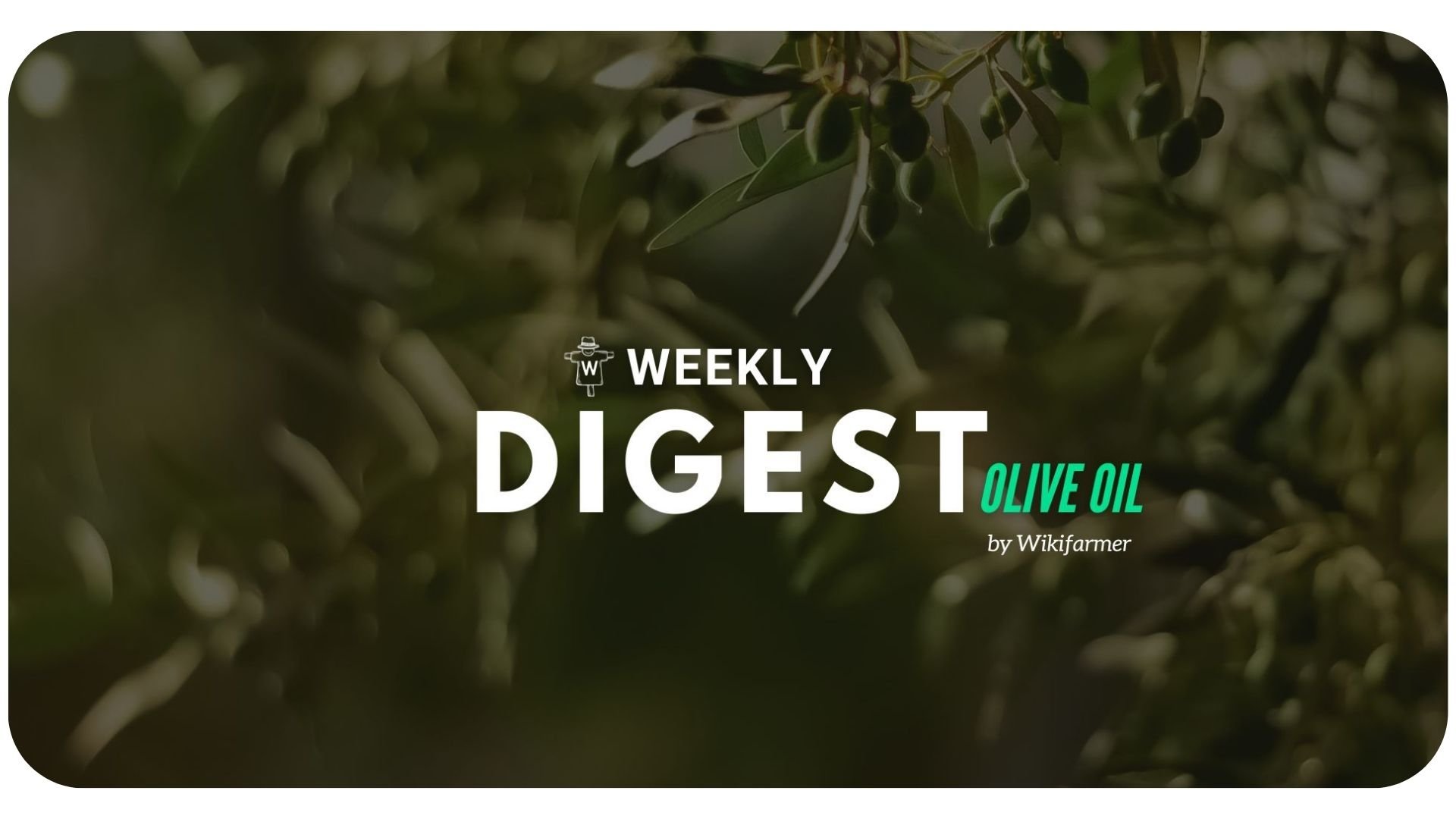Olive Oil Market Digest w28

Weekly Olive Oil Market Updates
Monthly Movements in Spain
The European olive oil market continues to show some stagnation in bulk purchases, with no significant transactions and packers refraining from making large-scale deals. The activity of Wikifarmer and our field experts is providing valuable information for a better understanding of the current market situation, supported by price data from the Union of Olive Oil-Producing Municipalities of Crete, PoolRed, and Ismea Mercati.
-png-1.png?width=757&height=470&name=0ZhfO-average-of-oil-mill-prices-evoo%20(6)-png-1.png)
The AICA report, which the Spanish market was anticipating, has been released. Outputs have fallen compared to the reports of the previous two months, reaching 76,502 tons, leaving behind the threshold of 80,000 tons. The total stocks available now stand at 415,023 tons. Considering a minimum link of 180,000 tons, the oil available on the market until the new harvest would be 235,000 tons.
-png-1.png?width=754&height=287&name=PdLod-average-of-oil-mill-prices-virgin%20(6)-png-1.png)
-png-1.png?width=754&height=468&name=9VVjm-average-of-oil-mill-prices-lampante%20(5)-png-1.png)
Experts point out that the quantities of EVOO (Extra Virgin Olive Oil) capable of passing a tasting panel are very limited, and most operations refer to qualities closer to virgin oils, at least in tasting. Some producers are inclined to empty their tanks before the summer holidays and are offering lower prices due to the inactivity of packers. We believe that the market should stabilize or even recover somewhat in the high-quality EVOO categories, while the price behavior of other qualities is a mystery that will depend more on how production reacts to the low existing demand.
In Italy, the market follows the trend of other European countries, with an equally low level of operations, and prices remain higher than their Mediterranean counterparts. Tunisia is also looking to sell its stocks, but the remaining olive oil is relatively low in quantity and of lesser quality.
In Greece, there is a bit more high-quality extra virgin olive oil, and prices remain stronger than in the Spanish market. The market is divided: some producers are holding onto their stocks, hoping to sell at higher prices, while others are eager to get rid of their stocks. Regarding the upcoming harvest, there is a general concern due to the current heatwave, which is stressing the olive groves. However, the possibility of rains in August and September could lead to a good harvest in October.
Saving Crops with Innovation: Sustainable Irrigation Using Regenerated Water
The Mediterranean region has experienced drought over the past year, leading to limited olive oil production and price fluctuations. To prevent such issues in the future, initiatives like the Reutivar 2.0 innovation project have been developed. This project has demonstrated that regenerated water can safely and effectively irrigate olive groves, fully complying with European and Spanish regulations. Presented by the Andalusian Government, Reutivar 2.0 emphasizes the environmental benefits and safety of using regenerated water, highlighting its potential to supplement traditional water sources along the Andalusian coast.
Building on its predecessor, Reutivar 2.0 focuses on efficient irrigation systems using regenerated water, which contains nutrients that can reduce fertilization costs. This approach offers economic and environmental advantages by decreasing pollution and supporting a circular economy through water reuse and nutrient recovery.
The project also provided practical tools for irrigators, such as the NITRINET predictive model, which forecasts nitrogen concentrations in irrigation water, enabling significant savings in nitrogen fertilization. Additionally, it explored the valorization of sludge from treatment processes and the use of solar thermal energy for sludge drying. Co-financed by the Regional Government of Andalusia and the European Union, the project involved various partners and organizations, proving that regenerated water is safe for health, beneficial for food quality, and environmentally sustainable. This initiative presents an excellent opportunity for sustainable practices in olive oil production.

Portuguese Olive Oil Shines Globally Despite Production Challenges
It was a challenging season for Mediterranean olive oil production due to the drought that affected the production yield. However, Portugal celebrated its second-biggest olive oil harvest in the 2023/24 crop year, and producers are optimistic about another successful harvest in 2024/25. The country produced 157,600 tons of olive oil, exceeding the five-year average by 17 percent and nearing the record-high of 206,200 tons in 2021/22. While the Alentejo region enjoyed a fruitful yield, northern regions experienced below-average harvests. Despite challenges such as drought, rising production costs, and labor shortages, Portuguese producers maintained high-quality standards, earning 30 awards from 56 entries at the 2024 NYIOOC World Olive Oil Competition. Notable winners like Casa de Santo Amaro and Acushla emphasized the importance of these awards in elevating Portugal's global profile as a top olive oil producer.
The exceptional quality of Portuguese olive oil was highlighted by multiple award wins, including those by Quinta dos Olmais and CARM. These accolades are seen as validations of the producers' dedication and craftsmanship, helping to boost brand credibility and consumer trust. Despite the production declines and increased costs, the emphasis on quality and strategic harvesting has paid off, with producers like Acushla and SAOV optimizing their processes to ensure premium output. Looking ahead to the 2024/25 crop year, there is cautious optimism, with producers monitoring weather conditions closely to secure another successful harvest. These efforts reinforce Portugal's reputation for producing some of the world's finest olive oils.
Upgrade your sourcing tasks
Purchasing bulk olive oil just became more convenient, with the new bulk olive oil page live on our website 🚛

.png?width=450&height=87&name=New%20Logo%20(1).png)

